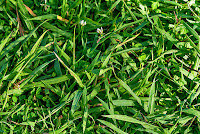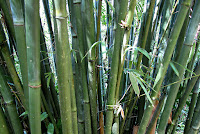<> Iambrix salsala (Moore, [1866]) <>
the Chestnut Bob ผีเสื้อจิ๋วหนอนมะพร้าว
Click on any photo to see all photos full size in Lightbox
Additions and corrections to the information provided on this page is always welcome. Please use the Contact form.
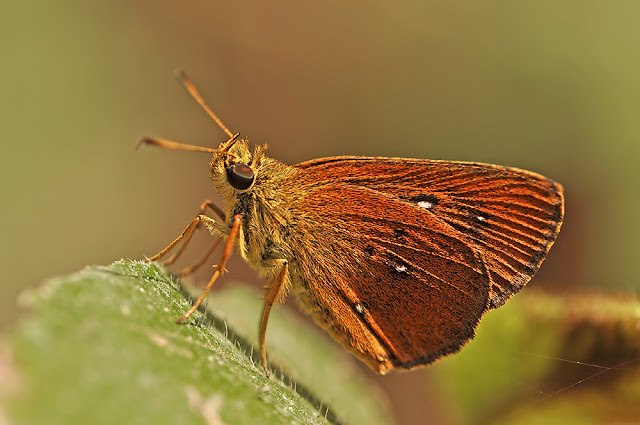
Photo taken at Lamnamkok National Park, Chiang Rai, Thailand. 450m a.s.l.

Iambrix salsala is the commonest of the two members of this genus and is widespread across most of the Southeast Asia region. There is little visual difference between the sexes except a few indistinct white spots on the upperside forewing of the female. The underwings are very similar. They fly close to the ground and the flight is undulating and rather erratic. When basking in the morning sun it adopts an unusual posture where it spreads its hindwings flat and holds its forewings perpendicular (see photos below). Both sexes visit flowers for nectar, and usually hold their wings upright but slightly apart while feeding.
The species is multivoltine with several generations per annum. The adult female lays her eggs on the upperside of a leaf on the host plant. After hatching the larvae live solitarily within shelters constructed from a grass blade that is rolled into a tube and fastened with silk. During the day it rests within the tube and only ventures out at night to feed.
Synonyms and previously used names: Nisoniades salsala
Taxonomy: Animalia - Arthropoda - Insecta - Lepidoptera - Hesperiidae - Hesperiinae - Iambrix - salsala
Regional subspecies: Iambrix salsala salsala (Nepal, Bhutan, India, Bangladesh, Myanmar, Thailand, Laos, Cambodia, Vietnam, China, Malaysia, Singapore)
Regional Distribution: Nepal, Bhutan, India, Bangladesh, Myanmar, Thailand, Laos, Cambodia, Vietnam, China, Malaysia, Singapore
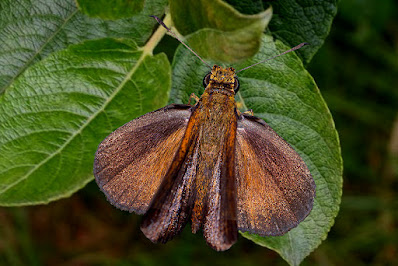 |
| Phnom Kulan, Siem Reap, Cambodia ~200m a.s.l. |
Habitat: Iambrix salsala is found in open areas within deciduous secondary and montane forest. It is also common amidst roadside vegetation and in urban parks and gardens. It has been recorded up to 1100m a.s.l.
Flight time: all year, depending on location Wingspan: 25-30mm
Life History: egg 4-5 days instar 1 4-5 days instar 2 3-4 days instar 3 4-5 days instar 4 6 days instar 5 7 days pupa 8-10 days Total egg to adult 36-40 days
All times are approximate and can vary depending on the season and on the host used.
Larval Hosts: Axonopus compressus, Bambusa bambos, Bambusa vulgaris, Eragrostis viscosa, Ischaemum timorense, Ottochloa nodosa, Oryza sativa, Setaria barbata, Urochloa mutica (Poaceae). Hosts used depends upon location and availability of plant species.
Adult Food Sources: Nectar - Torenia polygonoides (Linderniaceae), Duranta repens, Lantana camara, Stachytarpheta cayennensis (Verbenaceae), Ziziphus mauritiana (Rhamnaceae), Bidens alba, Bidens pilosa, Chromolaena odorata, Tridax procumbens, Zinnia elegans, Elephantopus scaber (Asteraceae), Premna serratifolia (Lamiaceae), Cuphea hyssopifolia (Lythraceae). Other - not known to mud puddle or if it uses any food sources other than nectar.
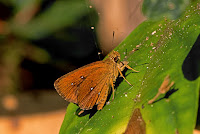 |
| Chiang Dao Nature Sanctuary, Chiang Mai, Thailand |
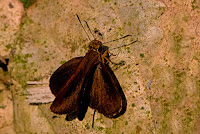 |
| Chiang Dao Nature Sanctuary, Chiang Mai, Thailand |
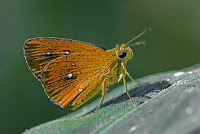 |
| Doi Suthep-Pui National Park, Chiang Mai, Thailand |
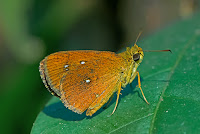 |
| Doi Suthep-Pui National Park, Chiang Mai, Thailand |
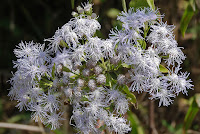 |
| Chromolaena odorata, a nectar source |
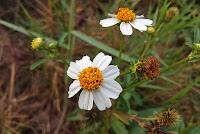 |
| Bidens pilosa, another nectar source |
Links to other pages in this series for species in the same subfamily

